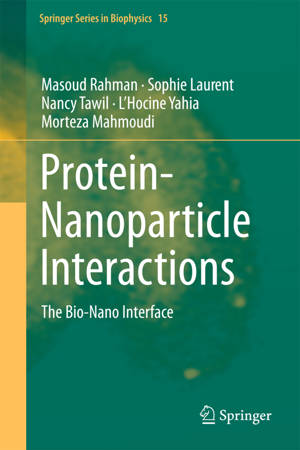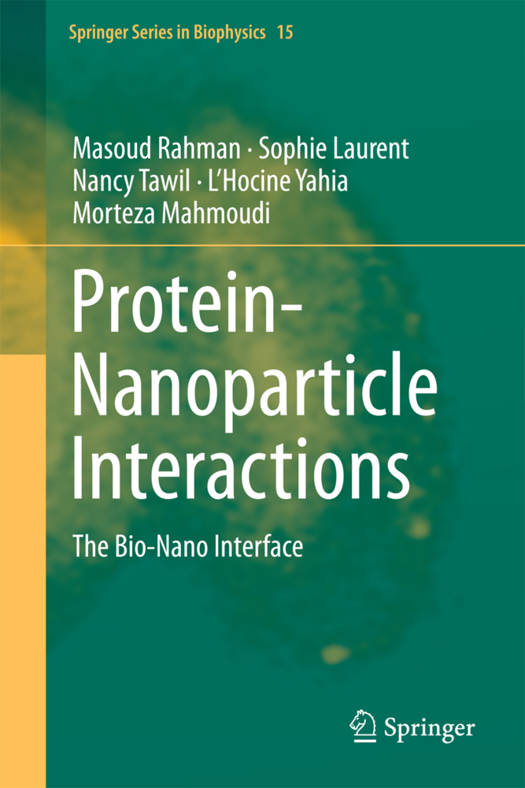
- Retrait gratuit dans votre magasin Club
- 7.000.000 titres dans notre catalogue
- Payer en toute sécurité
- Toujours un magasin près de chez vous
- Retrait gratuit dans votre magasin Club
- 7.000.0000 titres dans notre catalogue
- Payer en toute sécurité
- Toujours un magasin près de chez vous
Protein-Nanoparticle Interactions
The Bio-Nano Interface
Masoud Rahman, Sophie Laurent, Nancy Tawil, L'Hocine Yahia, Morteza MahmoudiDescription
In recent years, the fabrication of nanomaterials and exploration of their properties have attracted the attention of various scientific disciplines such as biology, physics, chemistry, and engineering. Although nanoparticulate systems are of significant interest in various scientific and technological areas, there is little known about the safety of these nanoscale objects. It has now been established that the surfaces of nanoparticles are immediately covered by biomolecules (e.g. proteins, ions, and enzymes) upon their entrance into a biological medium. This interaction with the biological medium modulates the surface of the nanoparticles, conferring a "biological identity" to their surfaces (referred to as a "corona"), which determines the subsequent cellular/tissue responses. The new interface between the nanoparticles and the biological medium/proteins, called "bio-nano interface," has been very rarely studied in detail to date, though the interest in this topic is rapidly growing.
In this book, the importance of the physiochemical characteristics of nanoparticles for the properties of the protein corona is discussed in detail, followed by comprehensive descriptions of the methods for assessing the protein-nanoparticle interactions. The advantages and limitations of available corona evaluation methods (e.g. spectroscopy methods, mass spectrometry, nuclear magnetic resonance, electron microscopy, X-ray crystallography, and differential centrifugal sedimentation) are examined in detail, followed by a discussion of the possibilities for enhancing the current methods and a call for new techniques. Moreover, the advantages and disadvantages of protein-nanoparticle interaction phenomena are explored and discussed, with a focus on the biological impacts.
Spécifications
Parties prenantes
- Auteur(s) :
- Editeur:
Contenu
- Nombre de pages :
- 84
- Langue:
- Anglais
- Collection :
- Tome:
- n° 15
Caractéristiques
- EAN:
- 9783642375545
- Date de parution :
- 04-07-13
- Format:
- Livre relié
- Format numérique:
- Genaaid
- Dimensions :
- 155 mm x 234 mm
- Poids :
- 276 g

Les avis
Nous publions uniquement les avis qui respectent les conditions requises. Consultez nos conditions pour les avis.






